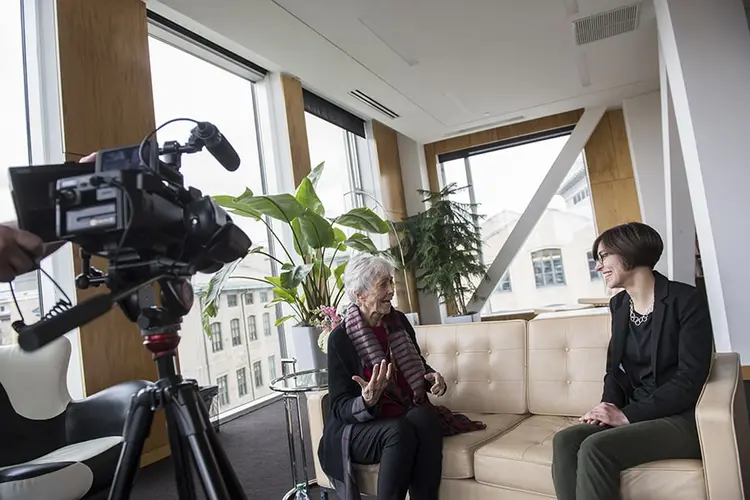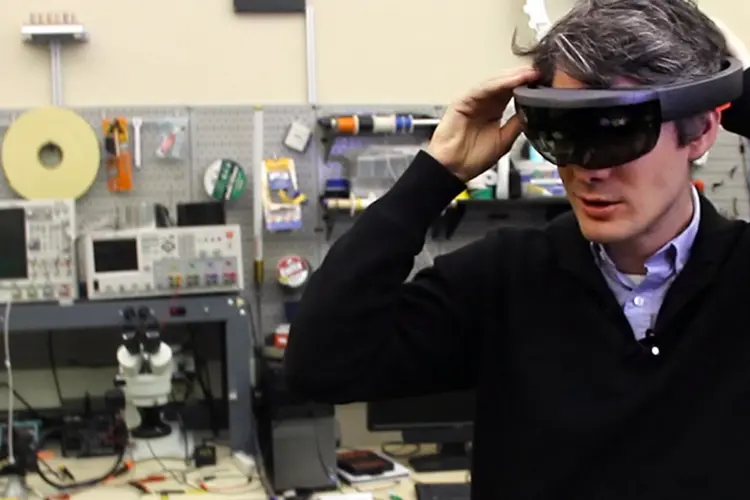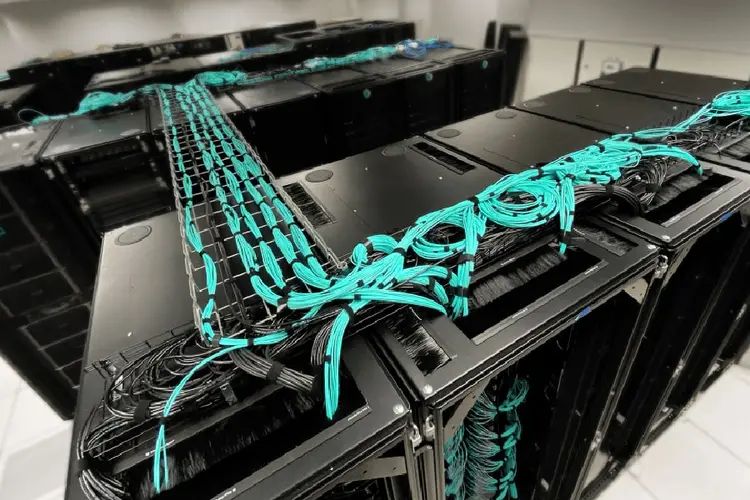
Crossroads for Data
Media Inquiries
Field Programmable Gate Arrays, or FPGAs, are an essential asset to an electrical and computer engineering curriculum. These integrated circuits can be reprogrammed by a user into different digital logic circuits after they have been manufactured. FPGAs are widely used: from military and aerospace applications to video and telecommunication equipment, and nowadays in data centers. This popular technology is an essential cornerstone to modern-day electronics.
FPGAs have been undergoing rapid and dramatic changes fueled by their expanding use in computing. The new Intel/VMware Crossroads 3D-FPGA Academic Research Center(opens in new window), an Intel and VMware co-funded, multiuniversity, multidisciplinary effort involving students and faculty from Carnegie Mellon University, the University of Toronto and the University of Texas-Austin (UT-Austin), has been formed to determine the role of FPGAs in extending the performance and efficiency of future data centers.
"Crossroads is guided by both the demands of modern networked, data-centric computing and the new capabilities from 3D integration," said James Hoe(opens in new window), lead principal investigator of the research center and professor of electrical and computer engineering(opens in new window). "The Intel/VMware Crossroads 3D-FPGA Academic Research Center will investigate a new programmable hardware data-nexus(opens in new window) lying at the heart of the server and operating over data 'on the move' between network, traditional compute and storage elements."
Named after creating an active crossroads for data in a server, the research center focuses on accelerating data movements and inline processing of data as they move between different points in the server.
"Besides having the right experts, the center is unique in its multidisciplinary approach," said Hoe. "Carnegie Mellon has a deeply rooted culture of collaboration and system building for this."
While FPGAs have been around for years, the center's focus on 3D integration adds a new dimension to what is possible. Besides making more transistors available in the same packaging footprint, the 3D die-stacking integration allows for more options in the tradeoff between performance, power and manufacturing cost than a single-layer device.
"By investigating how to use this technology in the architecture of the Crossroads FPGA, this 3D architecture, unlike traditional FPGAs, is a heterogenous system of many elements that include not only a compute-dedicated programmable logic fabric but also hardened fixed accelerators and programmable cores.
A number of research projects are already well underway, including "Pigasus: FPGA-Accelerated Intrusion Detection and Prevention System." CyLab faculty Justine Sherry(opens in new window), Vyas Sekar(opens in new window) and Hoe have been selected among the winners of Intel's 2021 Outstanding Researcher Awards(opens in new window) for their collaborative work.
As cyberattacks become more and more commonplace, intrusion detection systems (IDS) play a crucial role of scanning network data, looking for any hints of one of the tens of thousands of cyberattacks the systems know to look for. To keep up with increasing internet speeds and data flows, IDS' footprints have grown, driving up energy costs for organizations that rely on them.
Faced with this challenge, Sherry, Sekar and Hoe led the development of "Pigasus," an IDS that achieves speeds of 100 gigabits per second using a single server by capturing most of the processing on an FPGA-based smart network interface card. A comparable software-based system would consume hundreds of processor cores.
Other projects include redesigning network interface cards for direct application process, designing space exploration in the FPGA-as-a-system era, and Crossroads architecture template in Fluid (an in-house language and tool), to name a few.
"This is Intel's first center-scale funding on Field Programmable Gate Arrays," Hoe said. "The center is special due to being jointly-support by both Intel and VMware. The commitment to open-source all research artifacts is a new model to encourage broad collaboration and engagement beyond the center."
— Related Content —

Libraries Podcast Explores 'The Wild West of Computing'

